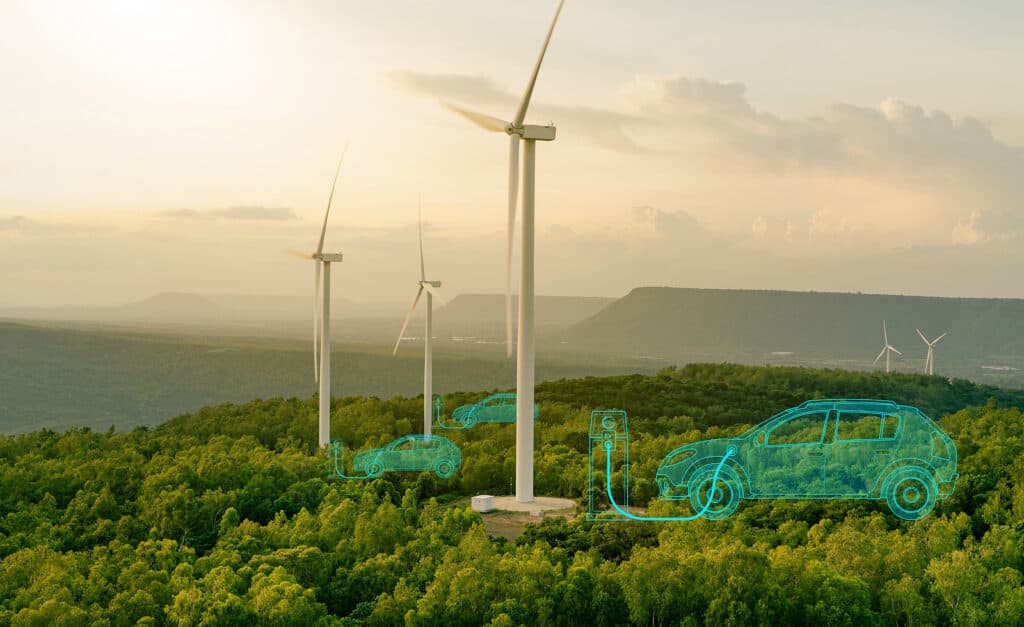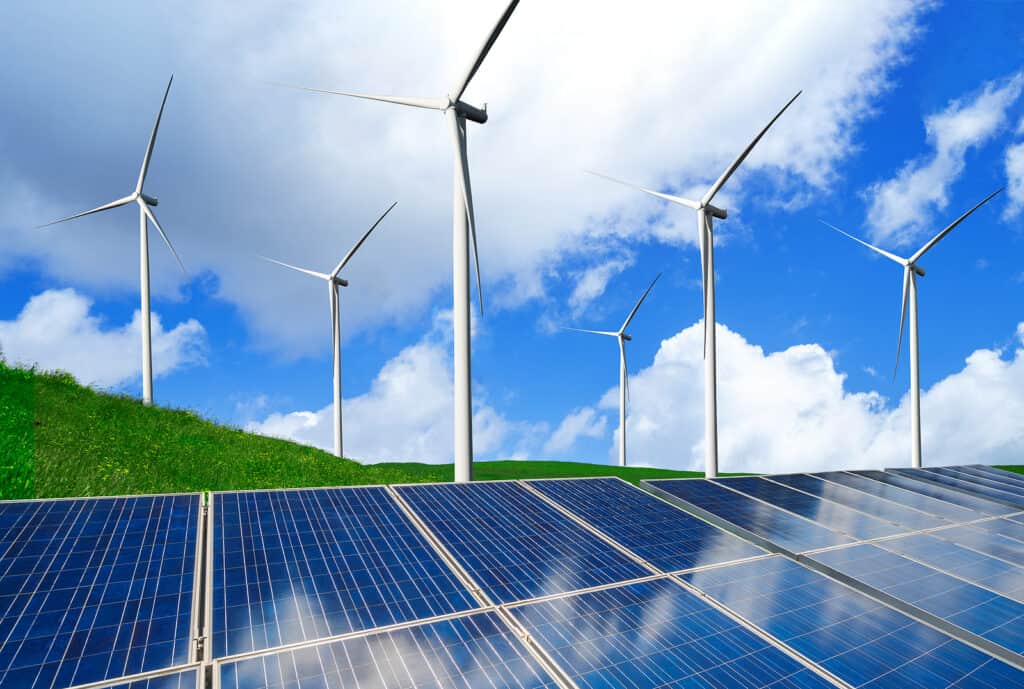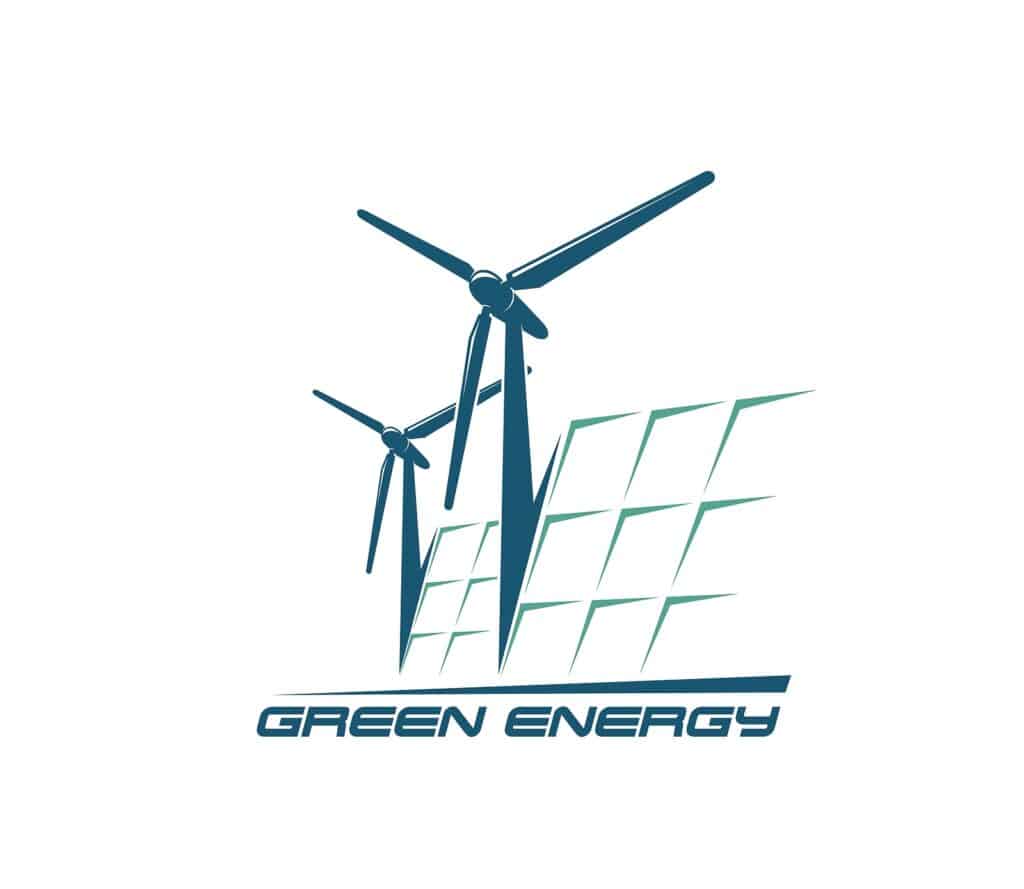Companies that prioritize sustainability and environmental responsibility often find themselves at the forefront of the global shift toward renewable energy sources. As the harmful consequences of fossil fuels become more apparent, these companies recognize the importance of investing in cleaner alternatives, with wind power emerging as a leading contender in the green energy race. If you are considering investing in wind power, it is crucial to evaluate the comprehensive pros and cons to make an informed decision aligned with your company's values and goals.
From a sustainability perspective, wind power offers several undeniable advantages. Firstly, it is a clean and renewable energy source, meaning it does not deplete natural resources and does not emit greenhouse gases or other pollutants during operation. By harnessing the power of wind, companies can significantly reduce their carbon footprint and contribute to mitigating climate change. This aligns with the broader goal of transitioning to a low-carbon economy and building a more sustainable future.
Understanding Wind Energy
To grasp the intricacies of wind energy and explore its benefits and drawbacks, it is essential to delve into the fundamental concepts behind it. Wind energy, a remarkable renewable resource, is harvested through the utilization of wind turbines, devices designed to convert the kinetic energy present in the wind into mechanical power.
This conversion process serves diverse purposes, enabling the direct application of this power to perform mechanical tasks such as grinding grains or pumping water. Alternatively, the mechanical power can be channeled into an electrical generator, transforming it into usable electricity.

How Wind Turbines Work
To gain a thorough understanding of the intricate workings of a wind turbine, let us embark on a comprehensive exploration of each stage, starting from the initial capture of wind energy to the ultimate conversion into electricity.
Wind Capture
A wind turbine's journey begins with the capture of wind energy. Towering high above the ground, the turbine's structure is strategically designed to position its blades in the path of prevailing winds. This ensures optimal exposure to the kinetic energy contained within the moving air masses. The tower acts as a stable support, while the rotating blades are meticulously shaped to maximize the extraction of wind energy.
Blade Aerodynamics
The aerodynamic design of wind turbine blades plays a crucial role in harnessing wind energy effectively. These blades are engineered to capitalize on the principles of lift and drag, similar to an airplane wing. As the wind flows across the curved surface of the blades, it generates both lift and drag forces. The lift force causes the blades to rotate, initiating the transformation of wind's kinetic energy into mechanical power.
Rotor and Nacelle
At the core of a wind turbine lies the rotor, consisting of multiple blades connected to a central hub. As the wind imparts rotational force to the blades, this rotational energy is transmitted to the hub. The hub, in turn, transfers the mechanical power through a sturdy shaft to the nacelle, which houses the turbine's essential components.
Mechanical Power Generation
Within the nacelle, a gearbox is often employed to increase the rotational speed of the incoming mechanical power. This amplified speed enhances the efficiency of subsequent energy conversion processes. The mechanical power is then transmitted to a generator, which transforms the rotational energy into electrical energy. The generator typically consists of a rotor, magnet, and stator, utilizing the principles of electromagnetism to generate a flow of electric current.
Power Transmission and Distribution
The electricity generated by the wind turbine is channeled through internal cabling within the turbine's structure. Subsequently, a transformer within the nacelle increases the voltage level of the electricity, enabling efficient transmission over long distances. The high-voltage electricity is then transported through power lines, interconnected grids, and substations to reach consumers, where it can be utilized to power homes, industries, and other electrical devices.
Types of Wind Energy Systems
To gain a comprehensive understanding of the various wind energy systems available, let us explore the distinct types, encompassing onshore and offshore wind farms, as well as smaller-scale domestic wind turbines.
Onshore Wind Farms
Onshore wind farms are one of the most common forms of wind energy systems. These large-scale installations consist of multiple wind turbines strategically positioned on land. The turbines are typically erected in areas with consistent and favorable wind conditions, such as open plains, coastal regions, or hilly terrains.
Onshore wind farms can range from a few turbines to hundreds, forming vast arrays that harness wind energy collectively. The generated electricity is transmitted through a network of power lines, connecting the wind farm to the existing electrical grid for distribution to end consumers.
Offshore Wind Farms
As technology and expertise in wind energy advance, offshore wind farms are gaining prominence. These wind farms are situated in bodies of water, typically in coastal regions or offshore locations. Offshore wind turbines are built on sturdy foundations such as monopiles or jacket structures fixed to the seabed. The offshore environment offers several advantages, including stronger and more consistent wind speeds compared to onshore locations.
However, constructing and maintaining offshore wind farms pose unique challenges due to the harsh marine environment. The electricity generated by offshore wind farms is transmitted via underwater cables and integrated into the electrical grid for distribution.
Domestic Wind Turbines
In addition to large-scale wind farms, smaller wind energy systems designed for individual households or small businesses have gained popularity. Domestic wind turbines, also known as micro-wind turbines or small wind turbines, are installed on residential or commercial properties. These turbines are typically smaller in size compared to their onshore or offshore counterparts, with a capacity ranging from a few kilowatts to tens of kilowatts.
Domestic wind turbines are often mounted on a mast or rooftop, taking advantage of the available wind resource in the vicinity. The electricity generated by these turbines can be used to power the immediate property, reducing reliance on the grid and providing localized renewable energy solutions.

Benefits of Wind Energy
Energy Independence and Security
Wind energy provides countries with an opportunity to reduce their reliance on imported fossil fuels. By diversifying their energy mix with wind power, nations can enhance their energy independence and strengthen energy security. Relying less on foreign energy sources reduces vulnerability to geopolitical tensions and price fluctuations associated with fossil fuels.
Water Conservation
Unlike conventional power generation methods such as coal or nuclear, wind energy does not require vast amounts of water for cooling or steam production. This characteristic makes wind power a water-efficient energy source, particularly in regions experiencing water scarcity or drought conditions. Wind energy can contribute to conserving precious water resources and alleviate stress on water supplies.
Community Development and Revenue Generation
Wind energy projects often involve partnerships with local communities, providing economic benefits and revenue streams. Landowners who host wind turbines on their properties can receive lease payments or royalties, offering a stable source of income. These financial benefits can support rural economies, stimulate local businesses, and fund community development initiatives, such as infrastructure improvements or educational programs.
Technological Advancements and Innovation
The growth of the wind energy sector drives advancements in technology and innovation. Ongoing research and development efforts aim to improve turbine efficiency, reduce maintenance requirements, and enhance energy storage capabilities. As technology evolves, wind turbines become more efficient, reliable, and cost-effective, leading to increased deployment and further driving down the overall cost of wind energy.
Scalability and Modular Design
Wind energy systems are highly scalable, allowing for flexibility in capacity expansion. Additional wind turbines can be installed incrementally, accommodating changes in energy demand over time. This scalability makes wind energy suitable for a wide range of applications, from small-scale domestic installations to large utility-scale wind farms.
Reducing Air Pollution
By replacing fossil fuel-based power plants, wind energy significantly reduces air pollution and its associated health risks. The combustion of fossil fuels releases harmful pollutants into the atmosphere, contributing to respiratory diseases, smog formation, and acid rain. Utilizing wind energy helps to improve air quality and promote public health, particularly in densely populated areas and urban centers.
Key Considerations Before Investing in Wind Power
Before making an investment in wind power, it is essential to carefully consider several key factors that can impact the success and feasibility of such a venture. Delving into the following considerations will help ensure a well-informed decision:
Wind Resource Assessment
Assessing the wind resource in the proposed location is crucial. Analyze historical wind data and evaluate the average wind speeds, direction, and consistency throughout the year. A reliable wind resource is necessary to generate a consistent and economically viable amount of power. Conducting a thorough wind resource assessment may involve engaging experts or utilizing available wind data resources.
Regulatory Environment
Familiarize yourself with the regulations and policies governing wind power in your area. This includes zoning regulations, permitting requirements, environmental impact assessments, and grid connection procedures. Understanding the legal framework will help you navigate the regulatory process and ensure compliance with all applicable laws and regulations.
Project Feasibility and Economics
Assess the financial feasibility of the project by conducting a comprehensive economic analysis. Consider the upfront costs of acquiring and installing wind turbines, including site preparation, infrastructure, and electrical connections. Evaluate the potential return on investment, taking into account factors such as electricity prices, available incentives or subsidies, and the projected lifespan and maintenance costs of the wind turbines.
Maintenance and Operations
Wind turbines require regular maintenance to ensure optimal performance and longevity. Consider the costs and logistics associated with ongoing maintenance activities, including inspections, servicing, and repairs. Evaluate whether you have the resources, expertise, or the option to engage qualified technicians or maintenance companies to handle the technical aspects and ensure the turbines operate efficiently.
Community Engagement and Environmental Impact
Engage with the local community and stakeholders to address any concerns and potential impacts. Consider the visual and noise impact of wind turbines on the surrounding area. Community acceptance and support are vital for a successful wind power project. Open communication and consultation can help address concerns, create goodwill, and foster positive relationships with the community.
Grid Integration and Interconnection
Evaluate the feasibility and costs of connecting the wind power system to the electrical grid. Consider the availability and capacity of nearby transmission lines or substations to accommodate the electricity generated by the wind turbines. Grid interconnection requirements and any associated costs should be carefully assessed and factored into the project planning.
Long-Term Commitment
Wind power investments require a long-term commitment. Consider the durability and expected lifespan of the wind turbines, as well as the potential for technological advancements or changes in regulations over time. Assess whether you have the necessary resources and commitment to operate and maintain the wind power system over its expected lifespan.
Investing in the Future: Exploring the Potential of Wind Energy
With the increasing global shift towards renewable energy, investing in the best wind energy stocks presents an opportunity to align one's investment portfolio with sustainability and long-term growth. Wind energy companies in USA are tied to companies involved in the development, manufacturing, operation, and maintenance of wind turbines and wind farms. These stocks offer investors exposure to a growing industry that plays a vital role in the global transition to clean energy.
The potential for u.s. wind energy stocks lies in the expanding demand for renewable energy sources, driven by concerns over climate change and the need to reduce carbon emissions. As governments worldwide implement policies and incentives to accelerate the adoption of renewable energy, wind power is poised for significant growth. This growth is supported by technological advancements that enhance the efficiency and cost-effectiveness of wind turbines. Additionally, the long lifespan of wind energy infrastructure and the stable and predictable nature of wind resources contribute to the appeal of wind energy stocks as a reliable investment option.
Investing in wind energy stocks europe can offer both financial returns and the satisfaction of supporting a sustainable future. However, as with any investment, thorough research and due diligence are crucial. Factors to consider include the financial health and track record of the companies, their competitive positioning, and their exposure to regulatory and policy changes in the renewable energy sector. By carefully assessing these factors and staying informed about industry trends, investors can make informed decisions and potentially benefit from the growth of the wind energy sector in the years to come.
Wind Energy vs Other Renewable Sources
When comparing wind energy to other renewable energy sources like solar and hydro power, several factors come into play. Let's explore the key considerations in more detail:
Resource Availability
Wind energy relies on the availability of consistent wind resources. While wind patterns can vary, certain regions tend to have more favorable wind conditions than others. Solar energy, on the other hand, relies on sunlight availability, making it suitable for a wider range of locations. Hydro power requires a consistent and sufficient water source, such as rivers or reservoirs, which may not be feasible in all areas.
Efficiency and Capacity Factors
Wind turbines have high capacity factors, indicating a high percentage of time during which they generate power at their maximum capacity. This efficiency is typically around 30-50%, meaning wind turbines produce electricity a significant portion of the time. Solar panels have varying efficiency rates, depending on factors like the technology used and sunlight intensity. Hydro power plants can have high capacity factors, but their efficiency can be affected by seasonal variations in water flow.
Cost Considerations
The cost of wind energy has become increasingly competitive over the years. Wind turbines have seen significant technological advancements and cost reductions, making wind energy economically viable in many regions. Solar energy costs have also decreased, especially with the widespread adoption of photovoltaic (PV) technology. Hydro power plants require significant upfront investment, particularly for large-scale projects, due to infrastructure requirements like dams and turbines.
Environmental Impact
Wind energy has minimal environmental impact during operation, as it does not produce greenhouse gas emissions or contribute to air or water pollution. Solar energy systems have a similar advantage, with no emissions during electricity generation. Hydro power can have environmental implications, particularly in terms of altering natural water flow and affecting aquatic ecosystems and fish migration patterns.
Scalability and Flexibility
Wind and solar energy systems offer scalability, with the ability to install systems of various sizes, from small residential installations to large utility-scale projects. This flexibility allows for customized applications to meet specific energy needs. Hydro power, however, may require large-scale infrastructure and is more suitable for areas with substantial water resources.
Analyzing the Growth Potential of Wind Energy: A Promising Renewable Power Source
In recent years, the wind energy sector has exhibited remarkable growth, with eps growth year annualized sales and expected earnings per share (EPS) showing promising trends. The industry's year-on-year annualized sales growth year has been consistently positive, reflecting increasing demand for wind power solutions worldwide. As governments and businesses strive to transition to cleaner and more sustainable energy sources, wind energy has emerged as a frontrunner, contributing to its upward trajectory in sales figures. Moreover, the year-on-year annualized expected EPS growth in the wind energy sector further highlights the positive outlook for investors, indicating the sector's potential for generating strong returns in the future.
Capitalizing on its renewable nature and environmental advantages, wind energy has witnessed substantial year-on-year annualized expected growth. This growth can be attributed to several factors, including government initiatives promoting renewable energy, technological advancements enhancing turbine efficiency, and growing public awareness of the need to address climate change. As wind energy continues to gain traction, the industry's sales growth year annualized expected to persist, bolstered by the increasing global demand for clean and sustainable power sources.
Conclusion
As I reflect on the comprehensive information presented about wind energy, I can't help but feel inspired and compelled to embrace this sustainable solution from a personal standpoint. The undeniable benefits of wind power, such as its clean and renewable nature, its ability to reduce carbon emissions, and its potential for long-term cost savings, resonate deeply with my commitment to environmental responsibility and sustainability.
Learning about the inner workings of wind turbines and the various types of wind energy systems, from onshore and offshore wind farms to domestic installations, has given me a sense of the versatility and scalability of this renewable energy source. It is impressive to witness the technological advancements and innovation driving the wind energy sector, making it an increasingly efficient and cost-effective solution.
Sources

